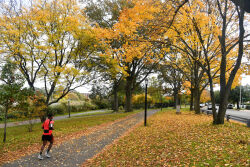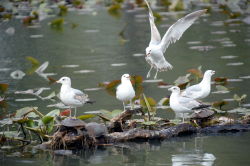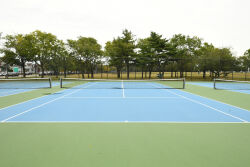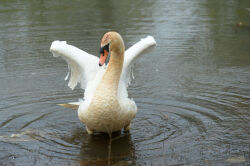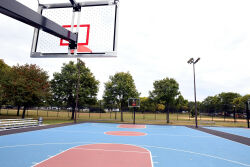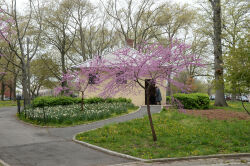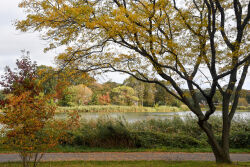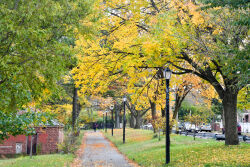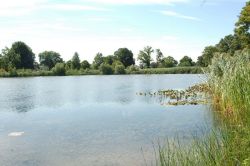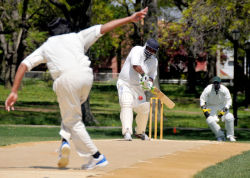Baisley Pond Park
Sutphin Playground
Sutphin Playground, located within Baisley Pond Park, is named for Sutphin Boulevard, one of the streets that bounds it. Baisley Pond was created in the 18th century when local farmers dammed three streams in order to power their grain mill. The pond and park are named for David Baisley, a local farmer who owned this land in the early 19th century and operated the mill that was located on the pond. Observing the drastic need for clean water in Manhattan, Brooklyn sought additional water sources and the Brooklyn Water Works acquired Baisley Pond for its water supply in 1852. In 1898, the City of Brooklyn voted to become a part of New York City in the consolidation of the five boroughs, partly because of the diminishing water quantity and quality in Brooklyn.
While dredging the bottom of Baisley Pond shortly after its acquisition, Brooklyn city workers made a startling discovery. Found buried in the sediment were the remains of an American Mastodon (Mammut Americanum), including five molars and a bone fragment. The Jamaica area is situated on stratified drift that was laid down during the last ice age; the Mastadon likely lived here after the retreat of the ice from Long Island approximately 10,000 years ago. Today, a sculpture of a mastodon in Sutphin Playground commemorates the discovery and makes for a unique playmate.
In 1914, the City of New York transferred the northern half of the Baisley Pond site to Parks, and it opened to the public in 1919. At the time, Queens was still a predominantly rural area and the park remained a rustic preserve. In the 1920s the neighborhood was urbanized as developers built hundreds of single-family homes in the neighborhood.
During the Great Depression, Parks Commissioner Robert Moses (1888-1981) and the Works Progress Administration constructed recreational facilities in the park, including a boat landing, several playgrounds, tennis and handball courts, baseball diamonds, and a football field. Development of the area continued and intensified after World War II, with the construction of the Cedar Manor Co-Op, Baisley Park Houses, and Baisley Garden. When Idlewild Airport (later John F. Kennedy International Airport) opened just south of here, commercial activity in the area increased tremendously.
The South Extension of Baisley Pond Park lay in a state of disarray for decades. Not entirely under the jurisdiction of Parks until the 1960s, it remained a wasteland of old pumping stations and debris. In 1984, Commissioner Stern, with the help of the local community, was able to transform this area and unify the park. The newly reconstructed area now includes more tennis and handball courts, a track, an athletic field, cricket mounds, basketball courts, as well as this playground.
Although the park is used mostly for recreational sports, it remains a vital natural habitat for many species of plant and animal life. Besides its fabled gigantic lily pads, the pond contains red-eared sliders, snapping turtles, musk turtles, and bullfrogs. Also thriving here are eight different varieties of dragonfly and a spectacular display of avian life. In the winter, Canadian geese, mallards, ducks, shovelers, coots, grebes, and gulls make their home here. In the summer, blackbirds, cormorants, herons, egrets, doves, mockingbirds, robins, starlings, warblers, cardinals, and sparrows forage and breed in the area.
Sutphin Playground underwent an $859,000 capital renovation, completed in 1997, that included the addition of the giant mastodon sculpture. Also included in the playground are play equipment and safety surfacing, a yardarm in the center of an inlaid compass, a sitting area, a spray shower, one basketball court, swing sets, and a drinking fountain.
Check out your park's Vital Signs
Clean & Safe
Green & Resilient
Empowered & Engaged Users
Share your feedback or learn more about how this park is part of a
Vital Park System

